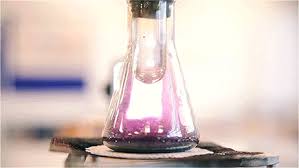Video english naration
COLLOID Colloids are a mixture of heterogeneous substances between two or more substances in which colloidal-sized substance particles are uniformly distributed in other substances. Colloid size ranges from 1-100 nm (10-7 - 10-5 cm). Example: Mayonnaise and paint, mayonnaise is a homogeneous mixture in water and oil and paint is a homogeneous mixture of solids and liquids. The colloidal system is a mixed form which lies between the solution and the suspension (crude mixture). This colloidal system has distinctive properties that are different from the nature of the solution or suspension. The colloid state is not a feature of a particular substance because all substances, either solid, liquid, or gaseous, can be made in a colloidal state. Colloid is a mixed system of "metastable" (as if stable, but will separate after a certain time). Colloids are different from solutions; Solution is stable. In colloidal solution in general, there are 2 substances as follows: ...
